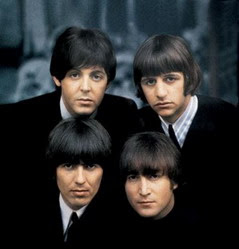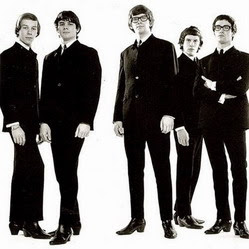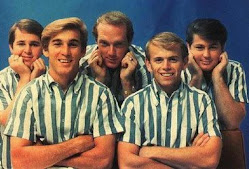 This British group was an outgrowth of mid-'60s pop group the Ivy League. Songwriting partners John Carter and Ken Lewis wrote, produced and performed "Let's Go to San Francisco" and licensed it out to Deram, who had an international hit with it as the Summer of Love was just winding down. The pair released four more singles, including one under the moniker Friends. None were hits and the group dissolved in 1970. Though they were extremely derivative of the then-au courant West Coast sound (especially the post-surf Beach Boys), the group managed to come up with some worthwhile tracks that showed a talent for smooth pop in a variety of modes (folkish, progressive, psychedelic, etc.) albeit with little rock backbone.
This British group was an outgrowth of mid-'60s pop group the Ivy League. Songwriting partners John Carter and Ken Lewis wrote, produced and performed "Let's Go to San Francisco" and licensed it out to Deram, who had an international hit with it as the Summer of Love was just winding down. The pair released four more singles, including one under the moniker Friends. None were hits and the group dissolved in 1970. Though they were extremely derivative of the then-au courant West Coast sound (especially the post-surf Beach Boys), the group managed to come up with some worthwhile tracks that showed a talent for smooth pop in a variety of modes (folkish, progressive, psychedelic, etc.) albeit with little rock backbone.The most comprehensive collection around, this has all their singles (most notably, the extended version of the Pet Sounds-influenced title track and a fantastic 1968 B-side, "You Can Never Be Wrong,") and 11 tracks not released until the '80s and '90s, some from an aborted album project. Though it can't really be called essential, much of the Flower Pot Men's legacy will nevertheless be enjoyable to lovers of '60s pop, who will be able to spot traces of the Beach Boys, the Turtles, the Left Banke, the Easybeats, the Zombies, the Move, the Moody Blues and others. (AMG).
 Tracklist :
Tracklist :1. Let's Go to San Francisco (Pts. 1 & 2)
2. A Walk in the Sky
3. Am I Losing You
4. Man Without a Woman
5. You Can Never Be Wrong
6. Piccolo Man
7. Mythological Sunday
8. In a Moment of Madness
9. Young Birds Fly
10. Sweet Baby Janes
11. Journey's End
12. Silicon City
13. Busy Doin' Nothing
14. White Dove
15. Let's Go to San Francisco pt.1
16. Let's Go to San Francisco pt.2
17. Cooks of Cake and Kindness
18. Gotta Be Free
19. Heaven Knows When
20. Brave New World
21. Children of Tomorrow

















































